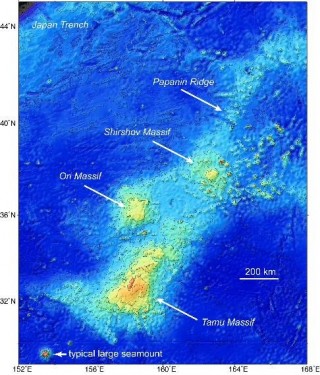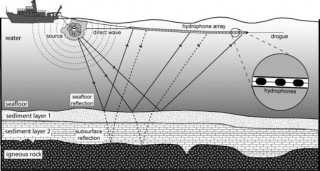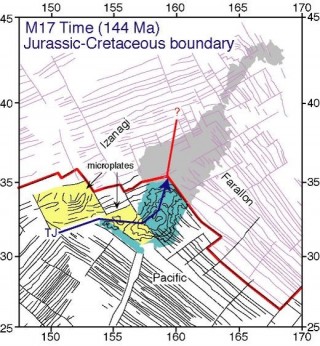
Our Arrival
After about 10 days of travel, we have finally arrived at Tamu Massif! During our transit, we mapped over 100 hours with millions of soundings that produced never before seen images of the ocean floor. The arrival at Tamu Massif is an exciting and historical moment for the science team and Falkor’s crew. We have now started our data collection over Tamu Massif, and over the next few weeks, explore and carefully observe what this massive volcano has to reveal.
The Culmination of 25 Years of Work


As we reached our destination, Dr. Will Sager, Tamu Massif expert, thinks back 25 years to share the story of the “World’s Largest Single Volcano.” Sager always had a great interest in the Pacific, especially plate tectonics. He knew there was something special going on at Shatsky Rise, the area where Tamu Massif is located. Sager’s interest and passion for exploration led him to write and submit his first proposal to explore Shatsky Rise, and in 1994, his first expedition set sail to perform extensive surveys and data collections over the area. The data they collected and studied led to even more questions that could only be answered by going to back to the site, using special instruments to retrieve yet another piece of the Tamu Massif puzzle. “For over 50 years we knew Shatsky Rise was there, but did not know the internal structure and therefore, could not determine whether the large underwater mountains were single or composite volcanoes,” Sager recalls. It would take deep seismic reflection profiling on the R/VMarcus G. Langseth and drill cores collected by the Joides Resolutionfor Sager to conclusively say that Tamu Massif was a massive single shield volcano. Now he returns on the R/V Falkor to try and answer what contributed to the formation of the infamous Tamu Massif.

A Highly Debate Hypothesis
Sager states the Plume Head hypotheses is something they want to test, but it is difficult to do on something 145 million years old. A plume is defined when hot material rises in a chimney-like geometry from the lower mantle (core-mantle boundary). The Plume Head is considered a hypothesis because it is an accepted idea by many scientists, but not by all and it is difficult to prove. “Whatever these plumes are, they seem to follow mid-ocean ridges, but Shatsky Rise shows that plumes find ridges.” states Sager. In either case, there is still much to learn and more research to be conducted.

Expectations
This expedition is the culmination of everything Dr. Sager and his teams have done throughout the years. “It’s been many years in the making and a remarkable journey. We will come away with better ideas of how Tamu Massif developed and why we think it formed at a triple junction of mid-ocean ridges and somehow took over those ocean ridges.” commented Sager. We are all thrilled to be part of this expedition as we unravel the mystery of Tamu Massif.

